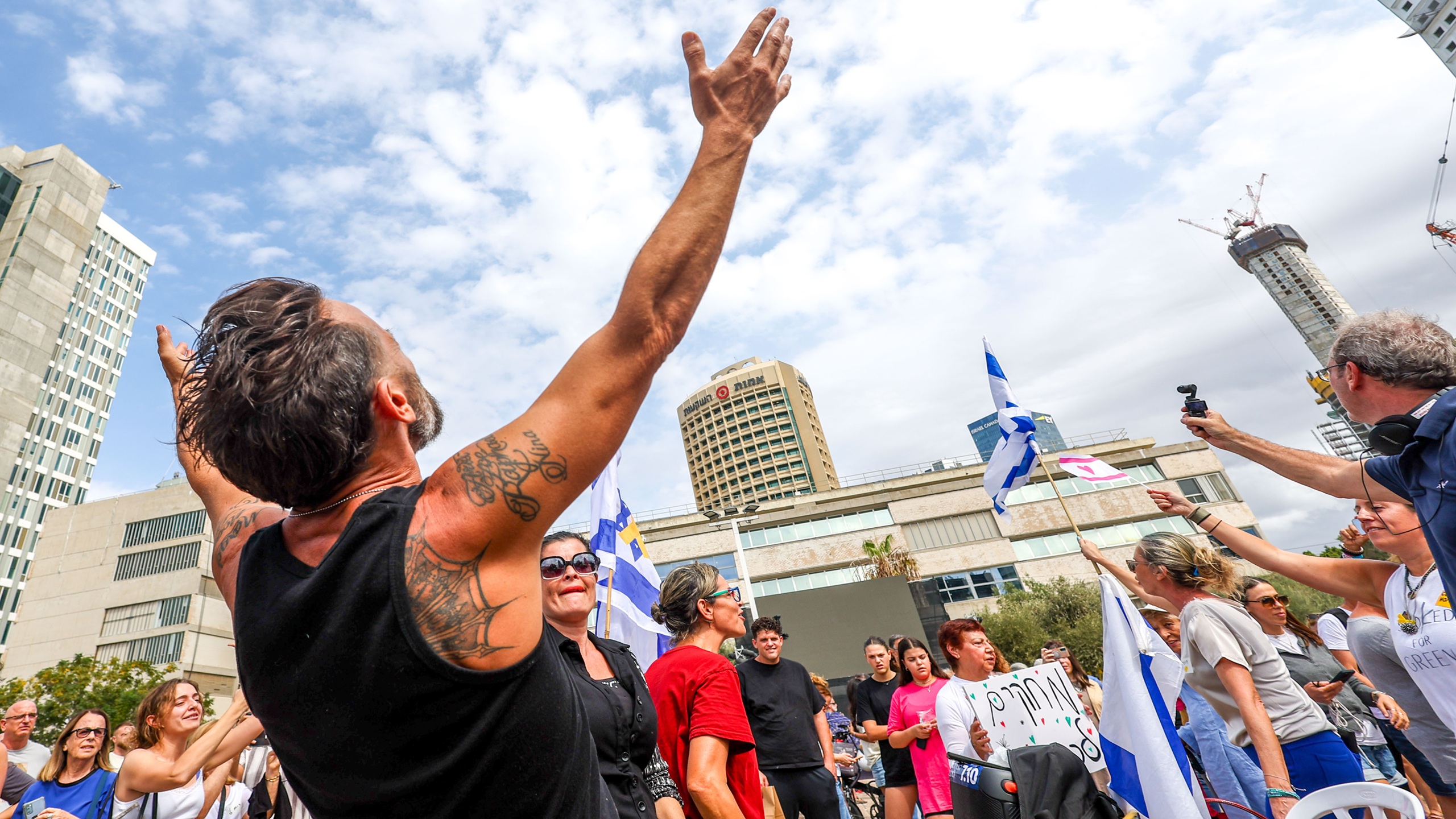How Washington and the Gulf Cleared a Path to a Fragile Gaza Truce
Deadlines from the American president, regional leverage, and war fatigue in Israel combined to produce a deal neither side fully wanted but both needed
Exactly two years after Hamas launched a surprise offensive against Israel that plunged the Middle East into a regional war, an agreement between the terrorist organization and Israel has been reached.
The deal is supposed to lead to the release of the remaining 48 living and dead Israeli hostages held by Hamas, in exchange for almost 2,000 Palestinian prisoners and detainees and the bodies of around 420 Palestinian combatants and terrorists. It will also begin an Israeli military withdrawal from the Gaza Strip.
US President Donald Trump announced early Thursday that Israel and Hamas had signed off on the first phase of his 21-point peace plan for Gaza. The move ushers in what is likely to be a fragile ceasefire that could collapse as talks move into later stages.
Yet Israelis and Palestinians could be seen rejoicing in both Gaza and Israel, as hopes for a ceasefire after a lengthy war offered a measure of optimism.
The prolonged conflict has commanded international attention since it began, with concerted efforts to end it. After two years, conditions appeared ripe for agreement.
Recent developments—including an intensifying Israeli campaign in Gaza and a brazen Israeli attack on Qatar—were key catalysts in the run-up to the latest round of negotiations, the round that bore fruit.
“There is no single reason,” Meir Ben Shabbat, head of the Misgav Institute for National Security and former national security adviser, told The Media Line. “It is a combination of the Israeli military operation in Gaza, the attack in Qatar, Trump’s desire to implement his grand vision for the Middle East, and Israel’s feeling that it has achieved a large part of what it set out to achieve.”
It is a combination of the Israeli military operation in Gaza, the attack in Qatar, Trump’s desire to implement his grand vision for the Middle East, and Israel’s feeling that it has achieved a large part of what it set out to achieve
In the region, shifting pressures and intense mediation by Qatar, Egypt, and Turkey—Hamas’ key supporters—helped isolate Hamas and corner it into accepting the agreement.
The terrorist group has been under mounting military pressure, as Israeli Prime Minister Benjamin Netanyahu threatened to occupy Gaza City, Hamas’ last remaining stronghold. The Israeli military has advanced in the city in recent weeks, with most civilians already displaced.
But Israel is also weary from sustained conflict, with its forces under significant strain and the country facing increasing isolation in the international arena.
When President Trump was sworn into office in January of this year, he vowed to end the conflict. He repeatedly issued deadlines and threats to Hamas and enlisted regional support to make the agreement possible.
Give the gift of hope
We practice what we preach:
accurate, fearless journalism. But we can't do it alone.
- On the ground in Gaza, Syria, Israel, Egypt, Pakistan, and more
- Our program trained more than 100 journalists
- Calling out fake news and reporting real facts
- On the ground in Gaza, Syria, Israel, Egypt, Pakistan, and more
- Our program trained more than 100 journalists
- Calling out fake news and reporting real facts
Join us.
Support The Media Line. Save democracy.


Although his plan—backed by Egypt, Qatar, Turkey, and other regional actors—contains elements that are nonstarters for both sides, its first stage could set major changes in motion across the Middle East.
Efforts to reach a ceasefire began almost immediately after the war started. Apart from two temporary ceasefires, which also included the release of some hostages, all attempts failed—until now.
One major turning point came a month ago, when Israel launched an airstrike against senior Hamas officials in Qatar. Qatar and Israel do not have diplomatic relations, but throughout the war, the Gulf state played a central role in mediation as Hamas’ leading benefactor. The attack failed to kill the leadership but triggered developments that appear to have played a decisive role in the agreement.
The strike angered Gulf states, including the United Arab Emirates (UAE), which maintains ties with Israel.
Israel has to explain to its enemies and all the other players through actions that the rules of the game have changed
“Israel has to explain to its enemies and all the other players through actions that the rules of the game have changed,” said Ben Shabbat. “Israel had to show initiative, determination, and a willingness to take heavy risks in facing all of its enemies anywhere in the world.”
But it also angered the US president, who was vocal and public about his discontent with Netanyahu. This triggered a flurry of emergency diplomacy in the region, changing the strategic calculations of every player.
“Without the failed Qatar attack and that Trump was under significant pressure from the Gulf states, we wouldn’t be where we are now,” Prof. Joshua Krasna, director of the Forum for Regional Cooperation and a professor at the NYU Center for Global Affairs and a former Israeli diplomat, told The Media Line.
Israel has been under increasing international pressure throughout the war. Allies have recognized a Palestinian state; some have imposed weapons embargoes. Academic and cultural boycotts have grown. Israel also faces genocide allegations at the International Court of Justice in The Hague.
But it was the latest regional developments that changed the tide.
“What doesn’t have to do with the United States and doesn’t have to do with the Gulf states, probably doesn’t move Israeli decision making very far,” Krasna said. “Once the possibility arose of there being a gap between the Trump administration, which began to change the decision-making process in Israel.”
The Gulf states are super critical for Trump’s domestic economic plans, having pledged trillions of dollars to invest in the US
“The Gulf states are super critical for Trump’s domestic economic plans, having pledged trillions of dollars to invest in the US,” Krasna explained further. “Trump sees the end of the war as a legacy issue, as he wants a peace prize, but also because he really wants to take the crisis off the table. There are lots of things he wants to do internationally, and this conflict is muddying things up.”
Israel normalized relations with the UAE, Bahrain, Morocco, and Sudan in 2020 as part of the Abraham Accords during the first Trump administration. The US president’s current vision for the region includes expanding those accords—an effort that requires an end to the war in Gaza.
The war has not only impeded further peace treaties; it has strained existing ones, with the UAE and others torn between their pacts with Israel and traditional pro-Palestinian positions.
“The UAE foreign policy is one that seeks to have a mitigating effect on regional conflicts,” said Ben Shabbat. “It is no secret that the war in Gaza brought pressure in terms of public opinion, and the end of the war should have a positive effect on this.”
In recent weeks, as Israel pushed forward with plans to occupy Gaza City, hundreds of thousands of Palestinians were displaced again and massive airstrikes rocked the Gaza Strip around the clock. Scenes of destruction and death fueled further criticism from countries accusing Israel of disproportionate action.
“The current operation wasn’t different than previous ones, but it brought the Arab states to an understanding that a ceasefire was needed,” said Krasna. “They were worried about a tremendous number of civilian casualties and pressure on their borders. The fact that Israel in the past few months had pressed harder had made the pressure for a ceasefire more significant.”
The end of the war will be a relief to both sides after 24 months of intense fighting. Hamas has suffered major losses, with much of its senior military command eliminated and key infrastructure damaged beyond repair.
The Israeli military has been entangled on several fronts beyond Gaza, as the war spiraled into a regional conflict. Israeli media, citing unnamed defense officials, reported at times that senior commanders opposed occupying Gaza City—not only due to force fatigue but also out of a view that military pressure would not yield a ceasefire and hostage release. Those accounts were never confirmed by military leaders.
“There is no doubt that there is burnout after two years of an intense multi-front war,” said Ben Shabbat. “But out of all the fronts, the one in Gaza proved that the army, the reservists, and the Israeli homefront are capable of withstanding a long war.”
As Israel and Hamas prepare to implement the first phase of the ceasefire, the region braces for major change—made possible by the dramatic developments that preceded the agreement.

